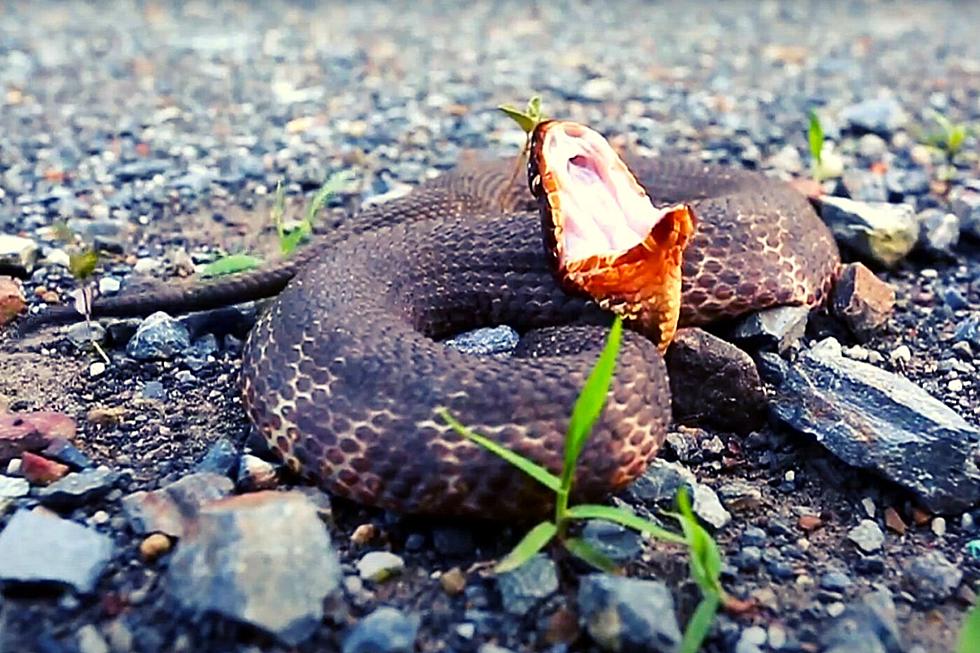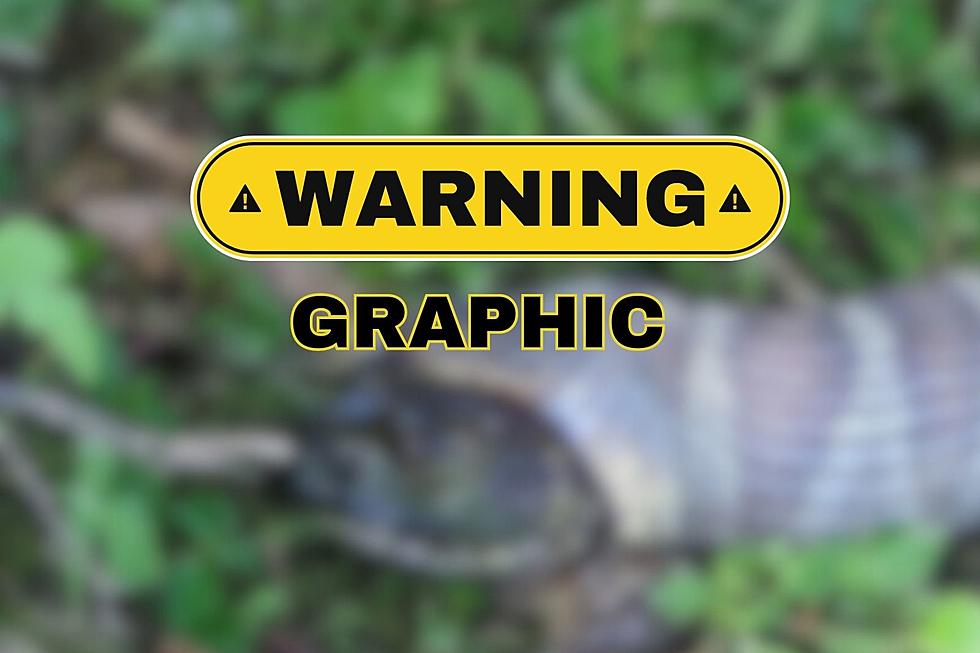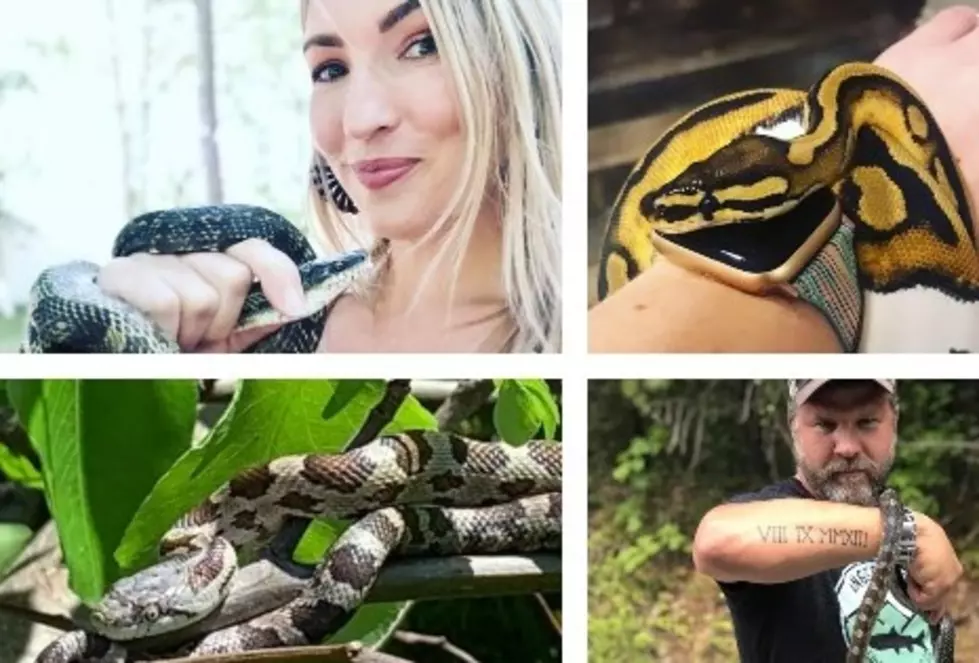
How to Identify Kentucky’s Four Venomous Snake Species
I follow a Facebook group called "Kentucky, Indiana, and Ohio Snake Identification and Education." It's very active, with contributors posting snake pics throughout the day every day and asking what they are. Pretty simple. And very--as the title says--EDUCATIONAL.
Identifying Kentucky's Venomous Snakes
But the administrators are deadly serious about posts. The two big things are 1) don't post pictures of dead snakes, and 2) DO NOT SPECULATE about what a snake might be if you do not know, for the purpose of safety.
So I have seen a number of postings of venomous snake pictures from Kentucky. And yes, despite the title, most of the images do come from Kentucky. But what I've learned is how closely HARMLESS snakes resemble one of the venomous ones (copperhead). If you know the subtle differences, you're fine. But many of us don't. So I thought it would be valuable as we head into the thick of the summer to sort that out.
Copperheads
I've consulted a handy guide from the Kentucky Department of Fish & Wildlife Resources, and they noted, right up front, the number of snakes that are killed each year under the mistaken belief they're copperheads.
In Kentucky, the copperhead can vary in general coloration from reddish brown (coppery-red) to brown, which is similar to several of the common harmless species. However, a good identifying characteristic for copperheads is the chestnut crossbands that are wide on the side of the body and narrower across the back.
I realize that when a copperhead or one of its lookalikes makes an appearance, it might be hard to take a close look. Still--and obviously--it's just good to know.
Copperheads can be found (if you're looking) all over Kentucky.
Western Cottonmouth
When it comes to western cottonmouths, behavior is an important thing to notice since their markings aren't readily apparent. Whereas a water snake might just dive into the nearest body of water, its doppelganger will do this (which would paralyze me with fear):
Cottonmouths often stand their ground in an open-mouthed threat display, revealing the whitish interior of the mouth, and often rapidly vibrate their tail.
In my camp, that's a firm NOPE.
Timber Rattlesnake
I've only ever encountered one venomous snake, and I didn't even see it. I didn't need to, though, because its RATTLE came through loud and clear. We were investigating the Gila Cliff Dwellings in New Mexico. After that tell-tale and bone-chilling sound, my uncle went and took care of it. No, he didn't kill it. He ran it off. So I was EIGHT when I learned Uncle Charles was a snake whisperer. There are no western diamondbacks in Kentucky, but we do have timber rattlers, and they have the added charm of being the LARGEST venomous serpent in the Commonwealth. Now here's the thing with these dudes...unlike rattlesnakes that will shake a tailfeather when alarmed, timber rattles will do so when PROVOKED. If you hear one...YIKES. If you see one, you'll see this:
It is a heavy-bodied snake with dark, sometimes V-shaped crossbands, on a yellow, gray, brown or sometimes greenish background color. The crossbands are always present except on completely black individuals, which occasionally occur.
Timber rattlers can be found everywhere in Kentucky except the northern Bluegrass region.
Western Pygmy Rattlesnake
This is the least common species of venomous snake in Kentucky, as it is only found down around the lakes and, specifically, in Calloway, Lyon, and Trigg Counties. I bet they'd like for them to fan out, if you ask me. The pygmy rattler's predominant color is gray. You would also see dark spots or short bars--and sometimes a rust-colored stripe--on its back. Those bars and spots might also be on its side. They're actually kind of beautiful, you know, for snakes. But here's where its gets dicey for me:
It has a skinny tail and very small rattle that can be hard to hear; and has been compared to the sound of an insect buzzing.
See, I thought we had a deal. Those rattles are supposed to WARN us, so how about you guys increase the volume? What say?
Although the KDFWR assures us that snakebites are rare, it's always best to be prepared for an emergency.
The best practice is to listen carefully, watch closely, and don't make them angry. To paraphrase a quote from the old Incredible Hulk TV series, "you won't like them when they're angry."
LOOK: 20 of the biggest insects in the world
Snake Encounters In Western Kentucky
More From WDKS-FM



![Mice Get Revenge on Snake in Owensboro Woman’s Breaker Box [PHOTOS]](http://townsquare.media/site/76/files/2021/07/attachment-breaker-box.jpg?w=980&q=75)





